Reviews
Juan Carlos Fresnadillo
UK, 2007
Credits
Review by Glenn Heath Jr.
Posted on 06 October 2011
Source Fox DVD
Categories 31 Days of Horror VIII
Movie sequels often face a double standard: they are expected to recycle characters and twists made popular by the original film yet stand alone on their own merits. A tough task for sure, sometimes nearly impossible considering the other social and economic factors surrounding the production. Artistic dilution is always a concern when a big-budget sequel is released, especially within the highly scrutinized realm of the horror film. It all comes down to the pressure of supply and demand. For every Saw, Blair Witch Project, and Paranormal Activity, there’s a small window of time Hollywood has to capitalize on audience recognition and branding. This rush to the finish line usually produces an inferior product, and there’s nothing like a shitty horror sequel to get cinephile’s riled up.
All this potential for disappointment makes the case of Juan Carlos Fresnadillo’s frenetic action/horror hybrid 28 Weeks Later all the more fascinating and relevant. Released in 2007 as an early summer blockbuster, the film was seen as creatively unnecessary, a cash grab offshoot of its bulletproof original pandering to the mass’s desire for more of the same. But 28 Weeks Later is not a rushed exhumation of Danny Boyle’s wildly popular zombie film 28 Days Later, nor a simple continuation of that movie’s hand-held vision of the apocalypse. As if to mirror the infinite and fated spread of the rage virus, 28 Weeks Later ambitiously expands the temporal and thematic concerns of its predecessor. Fresnadillo’s film grows increasingly chaotic even as its framework becomes less character-driven and more about massive societal failure. By sidestepping traditional tropes like emotional connection and desire, Fresnadillo accomplishes what few horror directors can claim: he deftly politicizes the personal.
If 28 Days Later focuses intensely on the way individual decisions can transcend moments of panic, Fresnadillo’s 28 Weeks Later shows the futility of that approach. An opening attack sequence inside a dimly lit farmhouse is a perfect example of how Fresnadillo deconstructs Boyle’s clear-cut vision of humanity. Husband Don and wife Alice talk softly in the dark, sharing a kiss before getting interrupted by another occupant. They join a larger group at the dinner table and begin talking about the glum prospects beyond the walls of their self-inscribed prison. Before we get to know these characters, rampaging zombies crash through boarded up doors and windows and snuff out their individuality. Sharp beams of light flood the space as panic and violence physically divides one couple at a time. The devastating sequence ends with Don escaping rather than sacrificing himself for the endangered Alice. The uncomplicated heroism of 28 Days Later is destroyed in one perfectly composed shot: Don runs through an open field, only to look back at the upstairs room and see Alice banging on the window. That Don keeps running without blinking an eye clues us in to what type of movie this will be. Seconds later, Alice is pulled into the darkness by her attackers.
This terrifying prologue reveals the act of separation as a key theme in 28 Weeks Later, not just in a physical sense, but also emotionally and politically. Flash forward six months after the initial outbreak; the virus has been quarantined and all infected victims have died. A U.S. led NATO coalition force has instilled some semblance of safety and normalcy to London in the guise of a makeshift section of the city labeled The Green Zone. Don, now a high-level city works manager, is reunited with his children, Tammy and Andy, who were away in Spain when the rage virus hit. The joy of their reconnection is initially palpable as the children run through their new penthouse apartment, appreciating the opportunity to start fresh. A Delta sniper named Doyle, positioned high above on a parallel rooftop, witnesses these hopeful moments through the viewfinder of his riflescope. But like the fragile defenses of the farmhouse, this is merely physical surface area bound to be punctured by impending violence, a false bottom society destined to collapse.
Curiosity ultimately kills the cat in 28 Weeks Later. Unsatisfied with their father’s explanation surrounding Alice’s demise, the children sneak into the infected area of London and return home hoping to reclaim trinkets of their previous life. But Tammy and Andy find more than just family pictures: hidden in the attic is a clammy, sickly Alice, barely alive and sporting visible scars and bite marks on her arm. While Alice’s perceived death acts as the beginning of 28 Weeks Later, her perceived survival will represent the beginning of the end. A carrier of the rage virus, Alice shows no symptoms, and is thusly transported to a high security military base in the Green Zone for scientific study. When Don sneaks in to plead his forgiveness for the farmhouse betrayal, one last kiss sends 28 Weeks Later into another narrative tailspin. As if to punctuate the impending viral destruction, Fresnadillo lingers on a close-up of the saliva strands linking the couple’s lips, a final moment of peace before all hell breaks loose. Seconds later, Don begins vomiting blood and devouring flesh, and the end is nigh.
What makes 28 Weeks Later such a scathing commentary on military occupation and political arrogance is how quickly Don’s guilt manifests itself as raging and violent physical force, effortlessly destroying all sense of communal safety from the inside out. With every bite (often captured using a camera rig attached to the actor’s body), kinetic momentum builds toward this imminent collapse, sending all the key players into an ocean of fleeing civilians. This motif climaxes in 28 Weeks Later’s most horrifying sequence where military commanders order Doyle and his snipers to open fire on everyone in sight. The rain of bullets from above is merciless, tearing apart limbs, splattering heads, and shredding legs. It’s virtually impossible to tell the zombies from the regular people running for their life, and this sense of crippling confusion is exactly the point.
28 Weeks Later grows increasingly harrowing as it progresses toward an unhappy end, jettisoning Doyle, Tammy, Andy and an Army scientist named Scarlet into the dilapidated streets of London crawling with troops and zombies. As the military eradicates the spreading virus with fire bombings, chemical weapons, and attack helicopters, 28 Weeks Later creates it’s own vision of Baghdad west, where moments of quiet only reflect the volatility about to unfold. But its the continual reappearance of Don, now seemingly instinctually driven to destroy his own offspring, that gives 28 Weeks Later its unique nasty streak. Individuality no longer exists, replaced with only the moment-to-moment experience of escape and murder.
Considering the film’s staggering brutality, it’s not surprising audiences didn’t exactly respond to Fresnadillo’s bleak picture of collective destruction (the film only made around 28 million domestically). As opposed to Boyle’s comparably safe vision of morality and sacrifice, 28 Weeks Later strips away all unnecessary emotion for a raw, messy examination of human nature gone awry. There is no control; only the assumption of order, which is about as useful as knife in a gunfight. Horror films often act as analogies for social injustices, but they’re almost never this effectively blunt. Fresnadillo’s stark vision of societal disintegration spreads like wildfire, shooting a mortal headshot into the ill-conceived foreign policies of a waning limp dick Bush Administration. For that, it remains a horrific time capsule we can’t afford to forget.
More 31 Days of Horror VIII
-
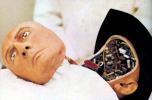
Westworld
1973 -

Child’s Play
1988 -
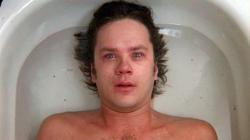
Jacob’s Ladder
1990 -

Willy Wonka and the Chocolate Factory
1971 -
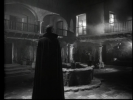
El Vampiro
1957 -
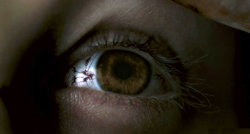
28 Weeks Later
2007 -

Piranha II: The Spawning
1981 -
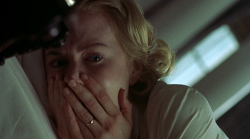
The Others
2001 -
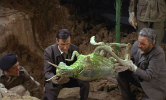
Quatermass and the Pit
1967 -

I Know Who Killed Me
2007 -

Bride of Re-Animator
1990 -

Alucarda
1978 -
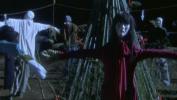
Kakashi
2001 -

Seizure
1974 -
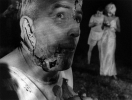
Night of the Living Dead
1968 -
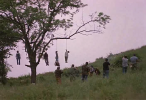
Night of the Living Dead
1990 -

The Bat Whispers
1930 -

Miracle Mile
1988 -

Tintorera
1977 -
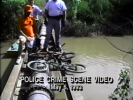
Paradise Lost
1996 -

The Cars that Ate Paris
1974 -
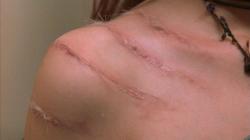
Ginger Snaps
2000 -
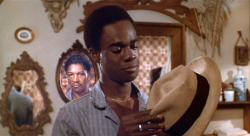
J.D.’s Revenge
1976 -
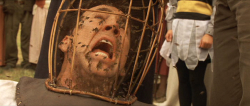
The Wicker Man
2006 -

Black Water
2007 -
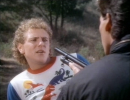
Don’t Panic
1988 -
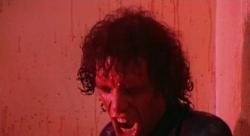
The Driller Killer
1979 -

Targets
1968 -

Mahal
1949 -
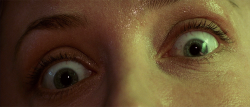
Event Horizon
1997
We don’t do comments anymore, but you may contact us here or find us on Twitter or Facebook.



